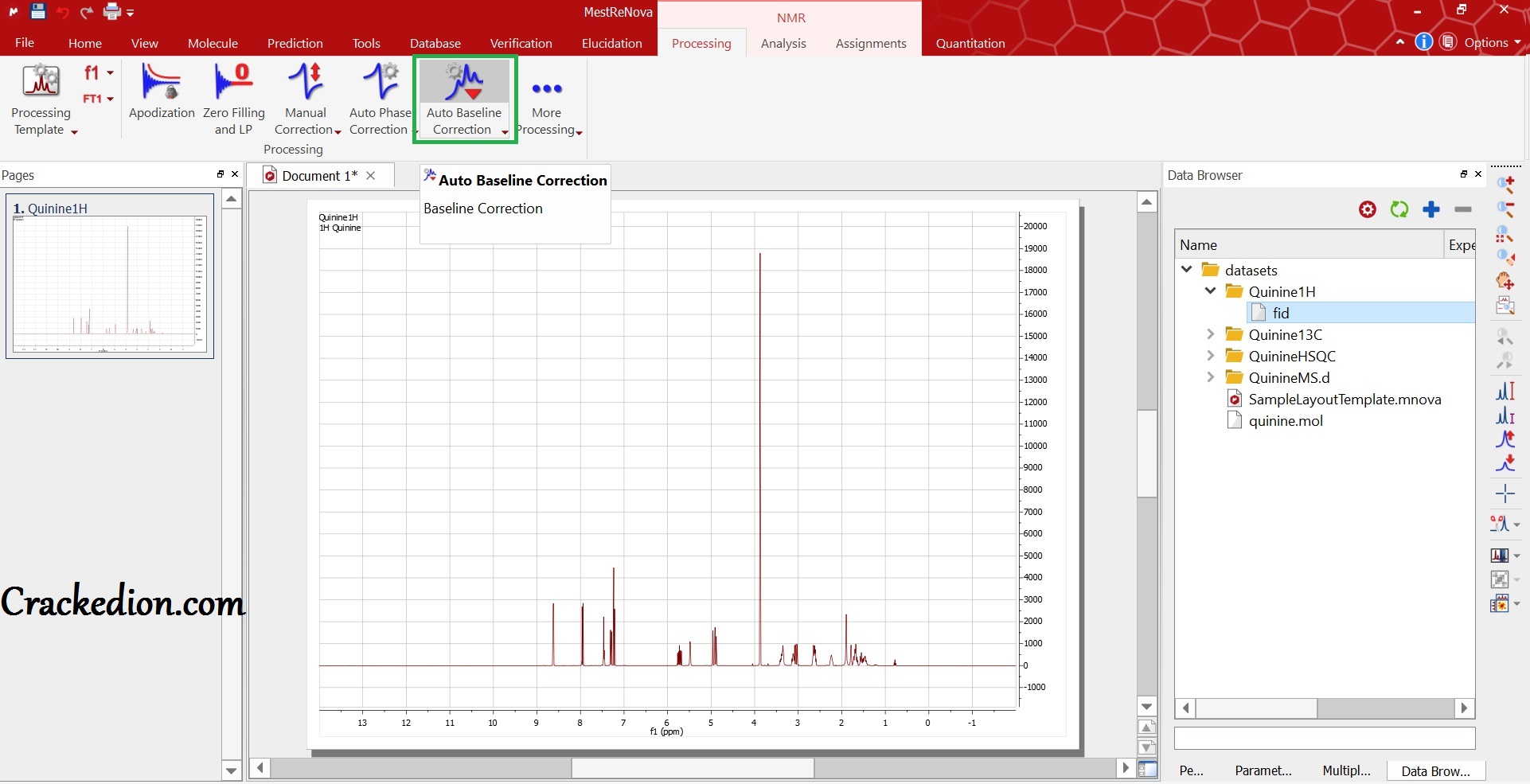

The operations to the first spectrum will be applied simultaneously over the whole dataset. Select one of them (by selecting Active Spectrum in the Stack scroll down menu of the left-vertical button) and apply the necessary processing and analysis (phase and baseline corrections, binning, signal suppression). We can do it by pressing Ctrl+A or by following the menu Edit/Select All and then clicking on the Stack Spectra button (in the left-vertical toolbar) or going to the Tools/Stack Spectra menu.ģ. Select all the spectra in the page navigator in order to create the stacked spectra. After about 5 seconds, all the spectra were fully processed as you can see in the picture below:Ģ. In this case we have dragged 16 spectra folders to the Mnova icon. When the dataset is small, we can drag the spectra folders to Mnova in order to get all the spectra fully processed. Let's take a look at the graphical method.ġ. Graphical (100 spectra): the user will only need to open a single spectrum of the dataset and optimize the processing in order to apply it to the remaining spectra by using the scripting capability implemented in Mnova. Mnova can be used on large datasets of biofluid spectra in two main ways, depending on the size of the dataset. Mnova includes powerful specific Phase and Baseline Correction algorithms for 1D and 2D biofluid spectra in order to get the correct quantification.

Mnova can automate the processing of large datasets of biofluids to extract an ASCII file ready for the statistical measurement.

Once datasets have grown to 20-200 spectra, manual processing is no longer an option. Mnova allows you to process large datasets with the best quality in order to obtain the most precise results.


 0 kommentar(er)
0 kommentar(er)
